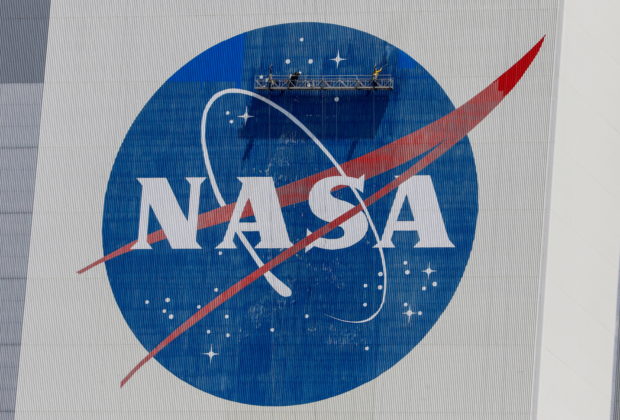
Workers pressure wash the logo of NASA on the Vehicle Assembly Building before SpaceX will send two NASA astronauts to the International Space Station aboard its Falcon 9 rocket, at the Kennedy Space Center in Cape Canaveral, Florida, U.S., May 19, 2020. REUTERS FILE PHOTO
Two U.S. astronauts were set on Tuesday
to venture out of the International Space Station for a
spacewalk to replace a failed antenna, facing what Nasa
officials say is a slightly elevated risk from the debris of a
Russian anti-satellite missile test.
Nasa TV planned to provide live coverage of the 6-1/2-hour
spacewalk, scheduled to begin at 7:10 a.m. Eastern time (1210
GMT) as astronauts Thomas Marshburn and Kayla Brown exit an
airlock of the orbiting research lab some 250 miles (402 km)
above Earth.
The outing is the fifth spacewalk for Marshburn, 61, a
medical doctor and former flight surgeon with two previous trips
to orbit, and the first for Barron, 34, a U.S. Navy submarine
officer and nuclear engineer on her debut spaceflight for Nasa.
Their objective is to remove a faulty S-band radio
communications antenna assembly, now more than 20 years old, and
replace it with a new spare stowed outside the space station.
The malfunctioning antenna recently lost its ability to send
signals to Earth. Though other antennae on the space station can
perform the same function, mission managers decided to install
the replacement to ensure communications redundancy, Nasa said.
Marshburn will work with Barron while positioned at the end
of a robotic arm operated from inside the station by German
astronaut Matthias Maurer of the European Space Agency, with
help from Nasa crewmate Raja Chari.
The four arrived at the space station Nov. 11 in a SpaceX
Crew Dragon capsule launched from the Kennedy Space Center in
Cape Canaveral, Florida, joining two Russian cosmonauts and a
Nasa astronaut already aboard the orbiting outpost.
Four days later, an anti-satellite missile test conducted
without warning by Russia generated a debris field in low-Earth
orbit, and all seven crew members took shelter in their docked
spaceships to allow for a quick getaway until the immediate
danger passed, according to Nasa.
The residual cloud of debris from the blasted satellite has
dispersed since then, according to Dana Weigel, NASA deputy
manager of the International Space Station (ISS) program.
But Nasa calculates that remaining fragments continue to
pose a “slightly elevated” background risk to the space station
as a whole, and a 7% higher risk of spacewalkers’ suits being
punctured, as compared to before Russia’s missile test, Weigel
told reporters on Monday.
Although Nasa has yet to fully quantify additional hazards
posed by more than 1,700 larger fragments it is tracking around
the station’s orbit, the 7% higher risk to spacewalkers falls
“well within” fluctuations previously seen in “the natural
environment,” Weigel said.
Still, mission managers canceled several smaller maintenance
tasks under consideration for Tuesday’s spacewalk, Weigel added.
Tuesday’s exercise marks the 245th spacewalk in support of
assembly, maintenance and upgrades of the space station, which
this month surpassed 21 years of continuous human presence, Nasa
said.